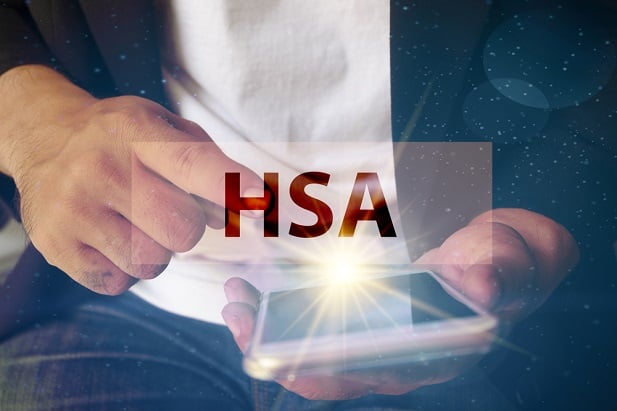(Bloomberg) -- Lawmakers in Illinois are so desperate toshore up the state’s massively underfunded retirement system thatthey’re willing to entertain an eye-popping wager: Borrowing $107billion and letting it ride in the financial markets.
|The legislature’s personnel and pensions committee plans tomeet on Jan. 30 to hear more about a proposal advanced by the StateUniversities Annuitants Association, according to RepresentativeRobert Martwick.
|The group wants Illinois to issue the bonds this year to get itsretirement system nearly fully funded, assuming that the state canmake more on its investments than it will pay in interest.
|It would be by far the biggest debt sale in the history of themunicipal market, and in one fell swoop would be more than PuertoRico amassed in the run up to its record-setting bankruptcy.
|“We’re in a situation in Illinois where our pension debt is justcrushing,” Martwick, a Democrat who chairs the committee, said in atelephone interview. “When you have the largest pension debt in theworld, you probably ought to be thinking big.”
|Illinois owes $129 billion to its five retirement systems afteryears of failing to make adequate annual contributions.
|Because the state’s constitution bans any reduction in workerretirement benefits, the government’s pension costs will continueto rise as it faces pressure to pay down that debt, a squeeze thathas pushed Illinois’s bond rating to the precipice of junk.
|Many American governments have sold bonds for their pensions,albeit on a much smaller scale. Illinois did so in 2003, when itissued a record $10 billion of them. New Jersey also tried it, onlyto see its pension shortfall soar again after the state failed tomake adequate payments into the system for years. Detroit’spension-fund borrowing in 2005 and 2006 helped push it intobankruptcy.
|On the whole, the track record has been mixed, according to astudy by the Center for Retirement Research at Boston College.
|Much hinges on timing the stock market: While most pension bondshave been profitable because of equity gains since the recession,those sold after the late 1990s rally or before the 2008 crash lostmoney, the study found. The S&P 500 Index climbed 19 percentlast year and has continued to hit new highs.
|The association, which represents members of the universities’retirement system, says the plan will save the state $103 billionby 2045.
||That’s because Illinois’s current debt to its pensions grows atthe rate that the retirement system expects to earn on itsinvestments. That’s usually much higher than the interest ratesgovernments pay to issue municipal bonds.
|Martwick, who has no position on the proposal, said he wants toprovide transparency and hearings for any ideas that could save thestate money. While the proposal to issue the bonds is being draftedinto a bill, it will only move forward if committee members backit, he said.
|“if it makes sense, we’ll do it, and if it doesn’t we won’t,”Martwick said.
|Municipal-bond investors would likely frown upon such a massivesale, to say the least.
|“Those types of deals are not typically positively received bythe rating agencies or investors,” said Eric Friedland,director of municipal research in Jersey City, New Jersey, for LordAbbett, which holds about $20 billion of municipal debt, includingIllinois’s. “That type of issuance could definitely be a creditnegative.”
|This kind of issuance contemplated by the association wouldsignificantly increase the state’s debt burden. Illinois had $26.3billion of general-obligation bonds as of July, according toMoody’s Investors Service, and the state sold $750 million of bondsin November to pay down unpaid bills that had accumulated duringits two-year budget impasse. The state still has $8 billion ofunpaid bills even after that issuance, according to thecomptroller’s office.
|This kind of issuance “will not go over well in the bondmarket,’’ said Richard Ciccarone, Chicago-based president ofMerritt Research Services LLC, which analysts municipal finance.“It absolutely increases default risk. There’s no cushion.”
|Copyright 2018 Bloomberg. All rightsreserved. This material may not be published, broadcast, rewritten,or redistributed.
Complete your profile to continue reading and get FREE access to BenefitsPRO, part of your ALM digital membership.
Your access to unlimited BenefitsPRO content isn’t changing.
Once you are an ALM digital member, you’ll receive:
- Critical BenefitsPRO information including cutting edge post-reform success strategies, access to educational webcasts and videos, resources from industry leaders, and informative Newsletters.
- Exclusive discounts on ALM, BenefitsPRO magazine and BenefitsPRO.com events
- Access to other award-winning ALM websites including ThinkAdvisor.com and Law.com
Already have an account? Sign In
© 2024 ALM Global, LLC, All Rights Reserved. Request academic re-use from www.copyright.com. All other uses, submit a request to [email protected]. For more information visit Asset & Logo Licensing.








